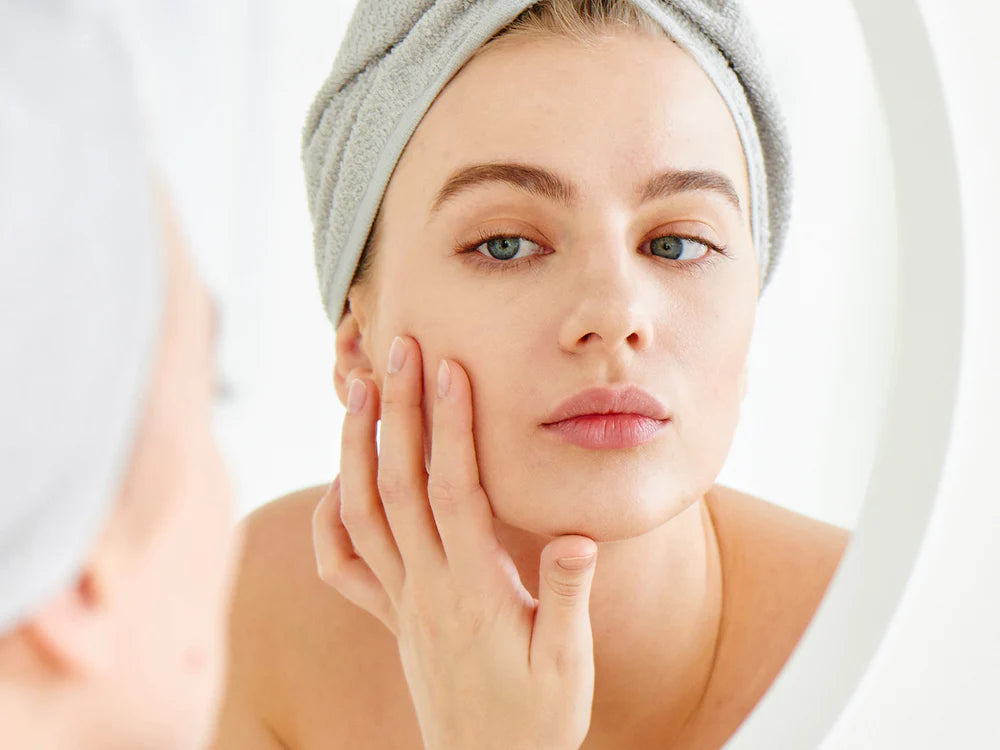
What are Sebaceous Filaments?
Sebaceous filaments, though often misunderstood, are a natural and integral part of our skin's physiology. These tiny tube-like structures, lining the walls of hair follicles, play a vital role in maintaining skin health. Frequently found on the face, particularly in the T-zone, sebaceous filaments are commonly mistaken for blackheads due to their appearance.
What are Sebaceous Filaments?
Sebaceous filaments are tiny, cylinder-like structures that are naturally occurring in the lining of hair follicles. They are often found on the face, particularly in areas with a high concentration of sebaceous (oil-producing) glands, such as the nose, chin, and forehead. Sebaceous filaments are not a type of acne or skin condition, and they are different from blackheads.
Key characteristics of sebaceous filaments include:
- Color: Sebaceous filaments are typically light to medium yellow or tan in color. They are not black like blackheads, which are caused by oxidized sebum.
- Texture: They have a soft, smooth texture and are more pliable than blackheads.
- Location: Sebaceous filaments are commonly found in areas where sebaceous (oil) glands are more concentrated, such as the T-zone of the face.
- Contents: The filaments contain a combination of sebum (skin oil), dead skin cells, and bacteria.
It's important to note that sebaceous filaments are a normal part of skin anatomy and play a role in maintaining skin health. Sebaceous filaments help transport sebum to the surface of the skin, where it plays a role in maintaining skin moisture and flexibility. Unlike blackheads, which are a type of acne lesion, sebaceous filaments are not associated with inflammation.
What Causes Sebaceous Filaments?
Sebaceous filaments are a normal and natural component of the skin's anatomy, and their presence is not indicative of a skin condition. They are primarily formed within hair follicles and are associated with the sebaceous (oil) glands that produce sebum to lubricate the hair and skin.
The formation and appearance of sebaceous filaments are influenced by several factors:
- Sebum Production: Sebaceous glands release sebum, an oil that helps moisturize and protect the skin. Sebaceous filaments contain a mixture of sebum, dead skin cells, and bacteria.
- Hair Follicle Structure: Sebaceous filaments are located along the lining of hair follicles. The structure and size of hair follicles can vary, impacting the appearance and prominence of sebaceous filaments.
- Genetics: Genetic factors play a role in determining skin characteristics, including the size and activity of sebaceous glands. Some individuals may naturally have more noticeable sebaceous filaments than others.
- Skin Type: The type of skin a person has, whether it's oily, dry, or combination, can influence the appearance of sebaceous filaments. Individuals with oilier skin may have more prominent filaments.
It's crucial to differentiate between sebaceous filaments and blackheads. While both may appear as tiny dots on the skin, blackheads are a type of acne lesion caused by the oxidation of sebum, dead skin cells, and bacteria. Blackheads have a characteristic dark color, while sebaceous filaments are usually light to medium yellow or tan.
How to Treat Sebaceous Filaments?
Sebaceous filaments are a natural part of the skin and, in most cases, do not require specific treatment. Attempting to remove or treat them aggressively can potentially lead to skin irritation or damage. However, incorporating a consistent skincare routine can help minimize their appearance and maintain healthy skin. Here are some general tips:
- Gentle Cleansing: Use a mild, non-comedogenic cleanser to clean your face. This helps remove excess oil and prevent the buildup of sebum and dead skin cells around the filaments.
- Exfoliation: Include a gentle exfoliant in your skincare routine to help remove dead skin cells. Chemical exfoliants containing ingredients like salicylic acid or alpha hydroxy acids (AHAs) can be effective. Avoid abrasive physical exfoliants that may irritate the skin.
- Clay Masks: Occasional use of clay masks can help absorb excess oil and impurities from the skin. Kaolin or bentonite clay masks are known for their oil-absorbing properties.
- Oil-Free Moisturizers: Use oil-free or non-comedogenic moisturizers to hydrate your skin without adding excess oil.
- Balanced Diet and Hydration: A healthy diet and proper hydration contribute to overall skin health. Drinking enough water and incorporating a variety of nutrient-rich foods can support skin function.
It's important to note that sebaceous filaments are not a skin condition that requires aggressive treatment, and they are distinct from blackheads. While sebaceous filaments are generally light to medium yellow or tan, blackheads have a characteristic dark color due to the oxidation of sebum.
How to Prevent Sebaceous Filaments?
While sebaceous filaments are a normal part of the skin and can't be entirely prevented, adopting a consistent skincare routine can help minimize their appearance and maintain healthy skin. Here are some preventive measures:
- Gentle Cleansing: Use a mild, non-comedogenic cleanser to clean your face. This helps remove excess oil, sweat, and impurities, preventing the buildup of sebum and dead skin cells around hair follicles.
- Regular Exfoliation: Incorporate a gentle exfoliant into your routine to remove dead skin cells. Chemical exfoliants with ingredients like salicylic acid or alpha hydroxy acids (AHAs) can help keep the skin's surface clear. However, avoid over-exfoliating, as it may lead to irritation.
- Oil-Free or Non-Comedogenic Moisturizers: Choose moisturizers that are oil-free or labeled as non-comedogenic to hydrate your skin without contributing to excess oil production.
- Avoid Aggressive Extraction: Refrain from attempting to squeeze or extract sebaceous filaments aggressively. This can lead to skin irritation, inflammation, and potentially worsen the appearance of the filaments.
- Clay Masks: Occasionally use clay masks with ingredients like kaolin or bentonite to absorb excess oil and impurities from the skin.
- Balanced Diet and Hydration: Maintain a balanced diet rich in nutrients, as this contributes to overall skin health. Staying well-hydrated supports skin function and can help maintain a healthy complexion.
- Sun Protection: Use sunscreen with at least SPF 30 daily to protect your skin from sun damage. Sunscreen helps prevent premature aging and protects the skin's natural barrier.
Remember that everyone's skin is different, and it may take some time to find the right combination of products and routines that work for you. If you have specific concerns or notice changes in your skin, consulting with a dermatologist can provide personalized advice and recommendations based on your individual needs and skin type.






